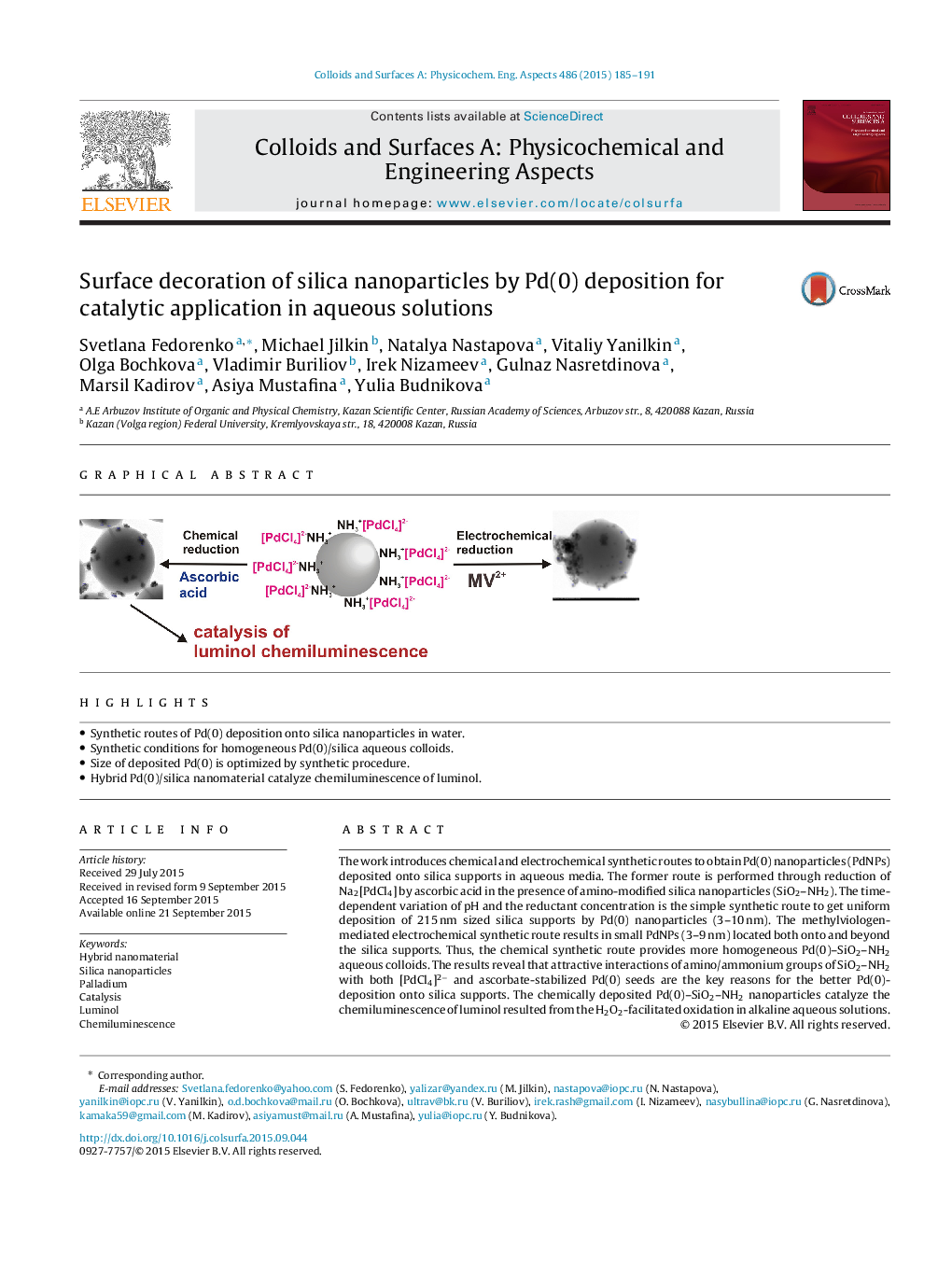| Article ID | Journal | Published Year | Pages | File Type |
|---|---|---|---|---|
| 591937 | Colloids and Surfaces A: Physicochemical and Engineering Aspects | 2015 | 7 Pages |
•Synthetic routes of Pd(0) deposition onto silica nanoparticles in water.•Synthetic conditions for homogeneous Pd(0)/silica aqueous colloids.•Size of deposited Pd(0) is optimized by synthetic procedure.•Hybrid Pd(0)/silica nanomaterial catalyze chemiluminescence of luminol.
The work introduces chemical and electrochemical synthetic routes to obtain Pd(0) nanoparticles (PdNPs) deposited onto silica supports in aqueous media. The former route is performed through reduction of Na2[PdCl4] by ascorbic acid in the presence of amino-modified silica nanoparticles (SiO2–NH2). The time-dependent variation of pH and the reductant concentration is the simple synthetic route to get uniform deposition of 215 nm sized silica supports by Pd(0) nanoparticles (3–10 nm). The methylviologen-mediated electrochemical synthetic route results in small PdNPs (3–9 nm) located both onto and beyond the silica supports. Thus, the chemical synthetic route provides more homogeneous Pd(0)–SiO2–NH2 aqueous colloids. The results reveal that attractive interactions of amino/ammonium groups of SiO2–NH2 with both [PdCl4]2− and ascorbate-stabilized Pd(0) seeds are the key reasons for the better Pd(0)-deposition onto silica supports. The chemically deposited Pd(0)–SiO2–NH2 nanoparticles catalyze the chemiluminescence of luminol resulted from the H2O2-facilitated oxidation in alkaline aqueous solutions.
Graphical abstractFigure optionsDownload full-size imageDownload as PowerPoint slide
